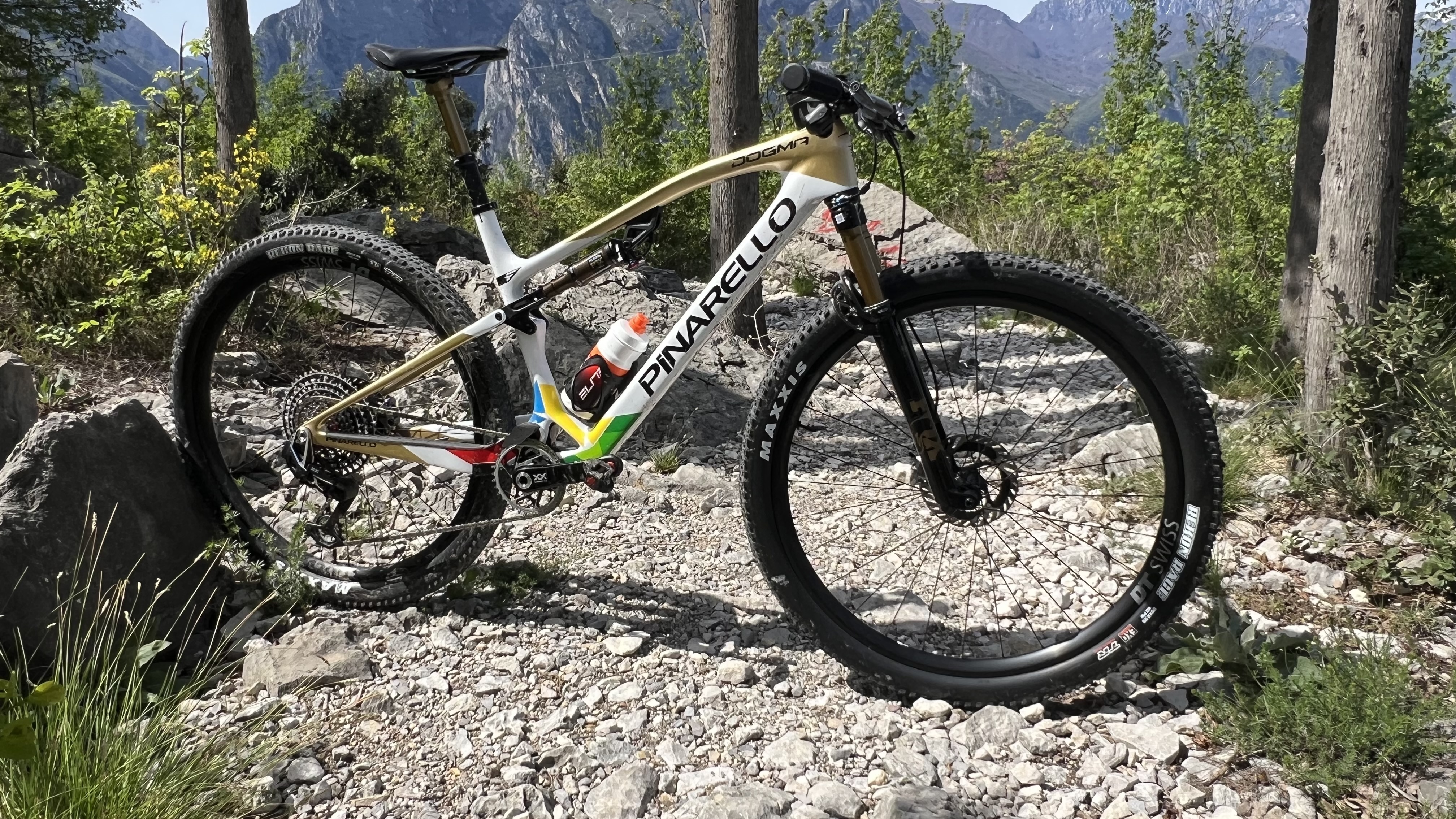
Pinarello take a uniquely athlete focused approach to their road and track race bikes and they’ve done with the same with their Dogma XC full suspension bike. But how does a bike designed to the demands of World and Olympic MTB champion Tom Pidcock ride? And does that mean a glory ride or potentially gory ride for mere mortals?
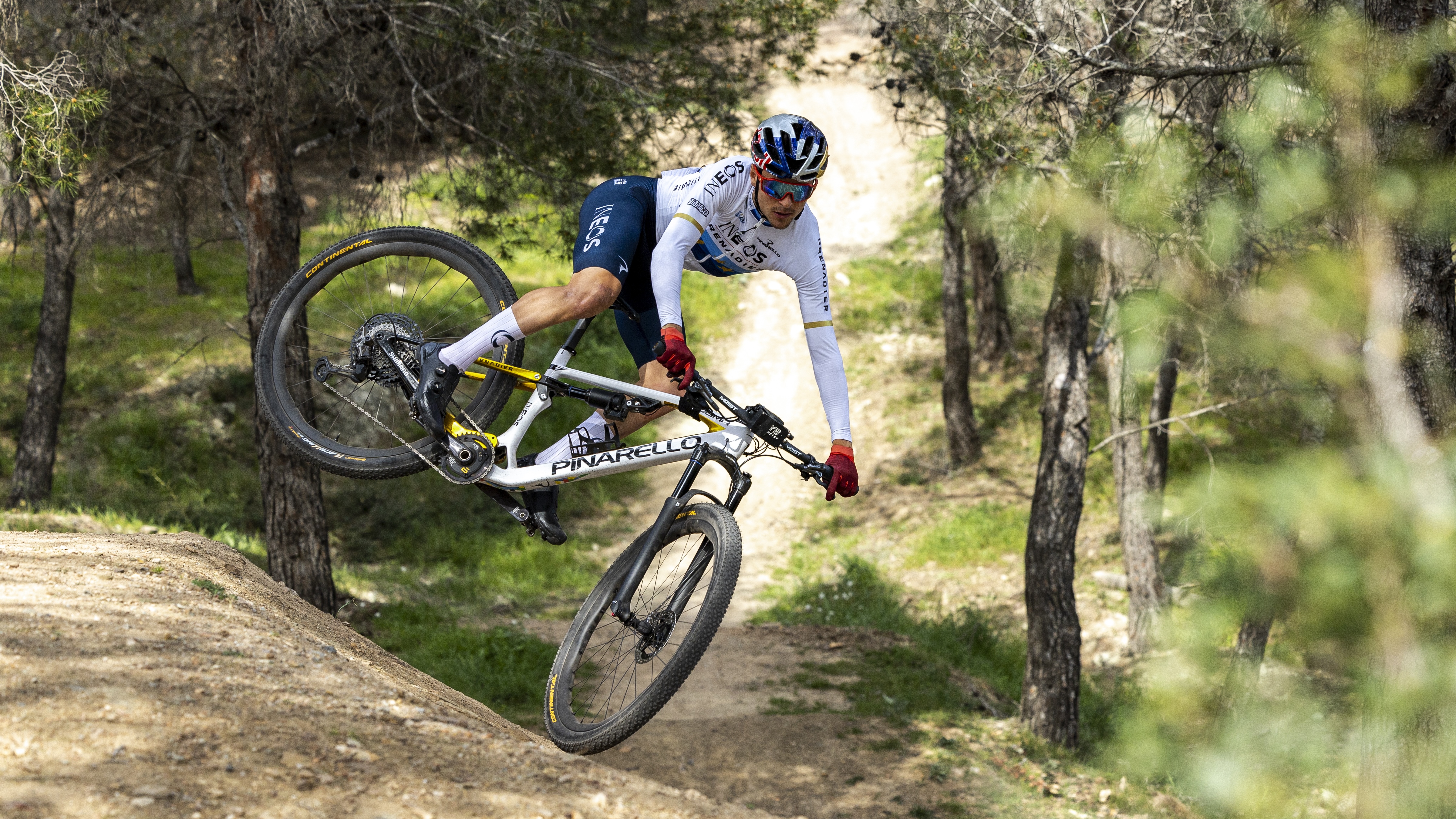
Origin story
Pinarello is the bike sponsor / provider for the Ineos Grenadiers team, but its road, cyclocross and mountain bike star, Tom Pidcock, actually raced an unmarked BMC Fourstroke frame for a while. In December 2022, Tom, the team and the Italian brand decided it was time to create a bike designed totally to his geometry and suspension tastes. He’d already dialed in those preferences by testing eight other brands and after building a 3D frame to check component fit, Tom was testing the first prototype just three months after the project was launched. Tom liked the bike so much that the only changes after that first ride were to remove some weight and he was racing and winning on it a couple of months later at Nove Mesto. When multiple World and World Cup Champion Pauline Ferrand Prevot joined the team, she was similarly impressed and while she raced a hardtail most of last season, she’s raced the full-suspension bike more often than not this year.
Pinarello also told us that they respect the athlete’s input on specialist race projects like this and Filippo Ganna’s hour record breaking track bike that the team have, has only ridden a handful of times.
That’s certainly not the normal development story, but seeing as Pinarello’s experience in modern mountain bike design is almost zero, putting faith entirely in the athletes definitely makes sense from a pure race perspective. Pinarello also made it clear that it wasn’t interested in diluting the race focus of its bike to create something more easy going and saleable. “You won’t find it [the Dogma XC] as easy and forgiving as other bikes that are designed with a commercial aspect, it has honestly been designed for the two best riders in the world and that’s the bike we’re putting in the market.” The Dogma's development team representative said at the press presentation I attended.
Tom’s coach, Kurt Bogaert, also told us that keeping the ride position and handling of the bike as close as possible to the road and cyclocross bikes that Tom spends far more time on was crucial to avoid injury and make switching disciplines. Again, that makes sense for Tom, Pauline and the team, but the result definitely goes against the trend for race bikes to ride more like trail bikes to cope with increasingly technical courses. It’s also worth noting that the bike is designed around very light riders (Pauline is 110lb / 50kg at race weight, Tom is 123lb / 56kg). As both Tom and Pauline ride small sized frames, the bikes we rode at the launch were the first medium and large samples they’d made and by definition, their geometry is just an extrapolation of the small proportions rather than being a race-tested recipe.
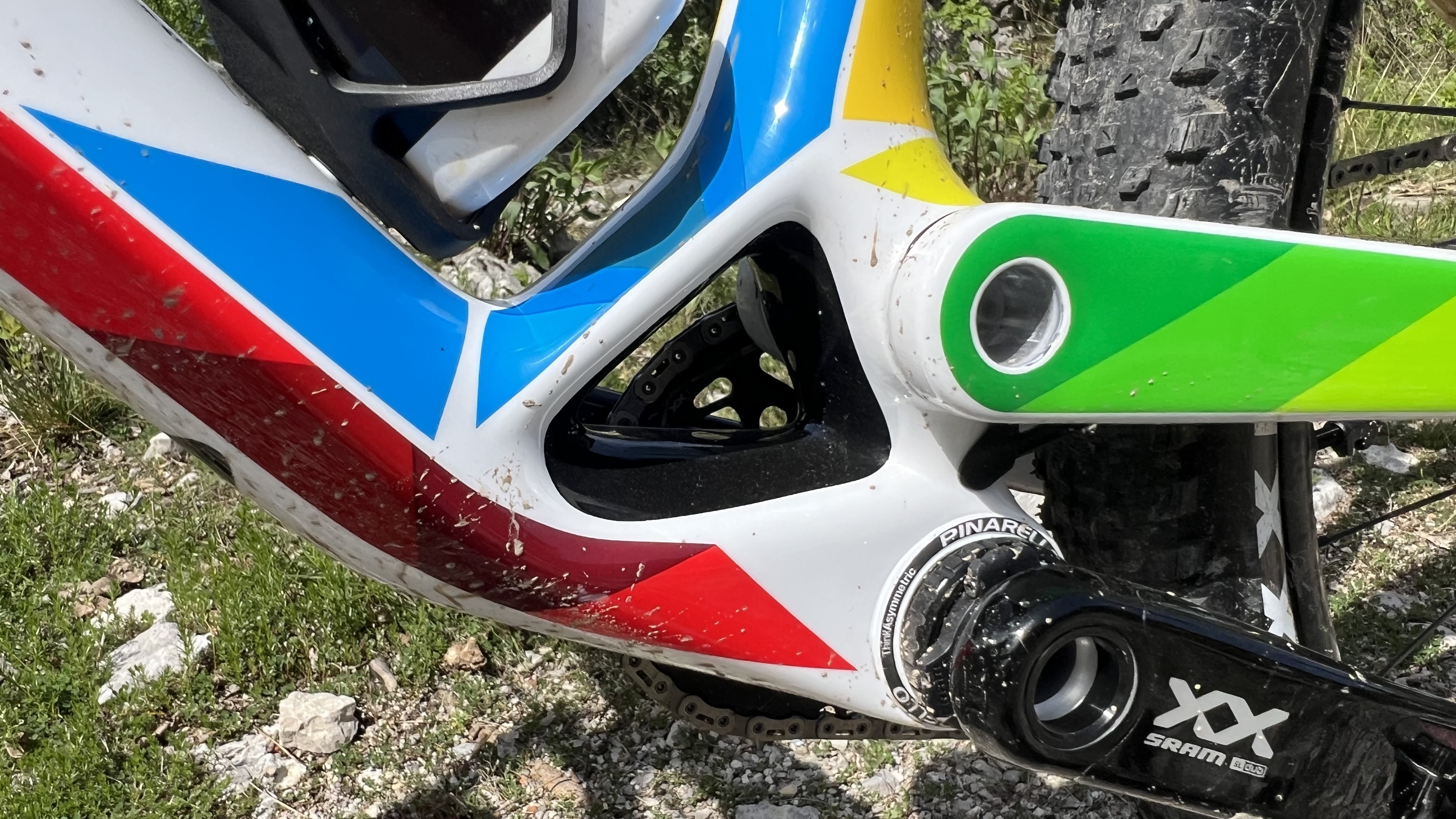
Design and geometry
The 480mm reach is only 5mm longer than the latest Specialized Epic 8 XC race bike, but it’s combined with an 80mm stem with a negative 18-degree angle. The 68-degree head angle is steeper than all the recent generation race bikes I’ve tested too and the seat tube is very tall at 475mm. In contrast, the back end is super short at 425mm and the bottom bracket is low at 323mm.
The bottom bracket and back end are the epicenter of effort when racing and Pinarello have been very creative in building the stiffest frame they could. The bottom bracket area uses and open triangle design and the rear swingarm is asymmetrical to balance stiffness between drive side and offside. The swingarm is made in two totally separate halves joined by a toothed Hirth joint on an oversized, hollow pivot axle that slides through oversized bearings on each side. The stiffness of this connection means Pinarello doesn’t have to use any cross bridges, and while the flex stays have chunky terminals where they join the upper linkage, there’s still room for 2.4in tires. The alloy linkage and shock driver yoke dovetail really neatly together ahead of the seat tube and the alloy shock mount can be unbolted and moved 20mm forward.
That gives the option to use a 210 x 50mm stroke shock for 100mm of rear wheel travel (ideally combined with a 120mm fork), but all bikes and frames will ship with a 190 x 45mm shock giving 90mm of travel. This operates at a very low two-to-one leverage ratio and the main pivot position means the anti-squat averages out around 100 percent.
The premium Dogma XC frame uses Toray M40J carbon fiber for a claimed small size weight of 3.85lb / 1749g without shock, which is on the heavy side for the current crop of race bikes. There’s a more affordable ($7,900 / £7,000 / €7,900) Dogma frame that uses Toray T900 UD and weighs slightly more, while the Dogma hardtail frame that Pauline often rides weighs 2.1lbs / 960g. The frame has no impact armor beside a thin rubber strip on the chain stay top. You do get a steering lock limiter that prevents the bars swinging round more than sixty degrees though. The frame also has a chunky looking, 3D-printed chain guide and there’s clearance for a massive 40-tooth chainring if you’ve got the legs for it. The rear brake mount is a road bike style flat mount attachment for a 160mm rotor and controls enter the frame through the one-piece carbon cockpit and into the head tube.
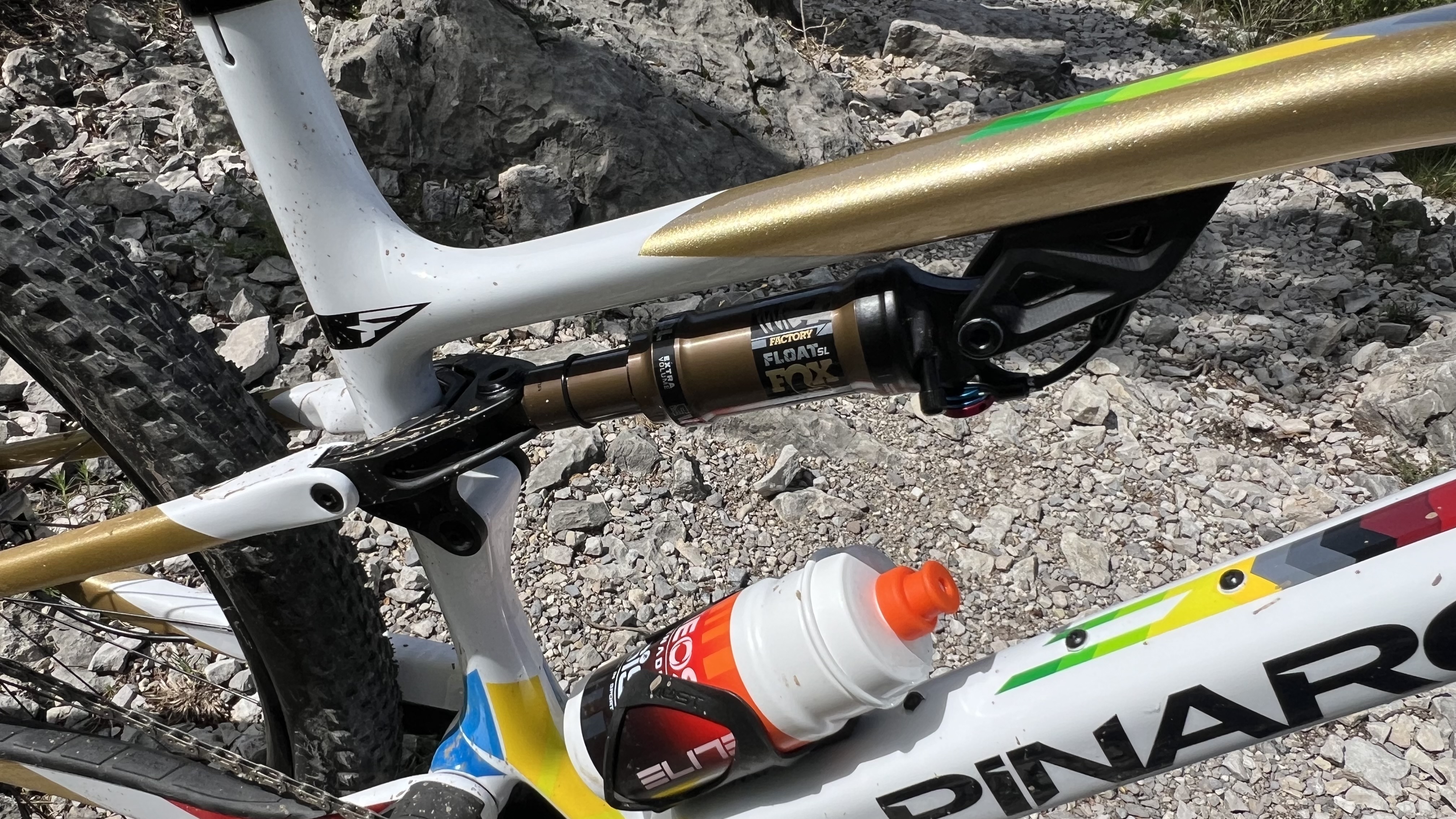
Components and build
The Most Talon XC cockpit comes with an 80mm stem equivalent on large and XL bikes, while small and medium bikes get a 60mm ‘stem’. Both have the same 760mm width and minus 18-degree droop though. The pronounced aero wing profile has openings on the underside which the cables and hoses (five on one side, two on the other) disappear into. The stem tightens with two small grub screws at the rear and comes with teardrop aero spacers. Alternatively, you can fit a standard bar and stem to the frameset if you wanted to.
While the World Championship rainbow and gold paint option (there’s also a red and black version) is team spec, the complete bikes aren’t. That’s because both Ineos riders use Suntour’s TACT suspension system which isn’t currently available outside of $4k custom setups, which is why production bikes come with the latest Fox 32SC forks and Float SL suspension. The wheels are DT Swiss XRC1200 rather than Princeton carbon and Pinarello cited continuing delays on new Shimano XTR as why ‘public’ bikes mix XTR brakes with a SRAM XX SL AXS wireless transmission.
Production bikes also get a short 100mm stroke, two-position Fox Transfer SL dropper post and Maxxis Rekon Race EXO reinforced tires rather than the hyper-fast Continental Race King tires which Tom normally uses. A carbon fiber-railed Prologo saddle completes the build, which I weighed at 10.47kg/23.08lb without pedals for a large.
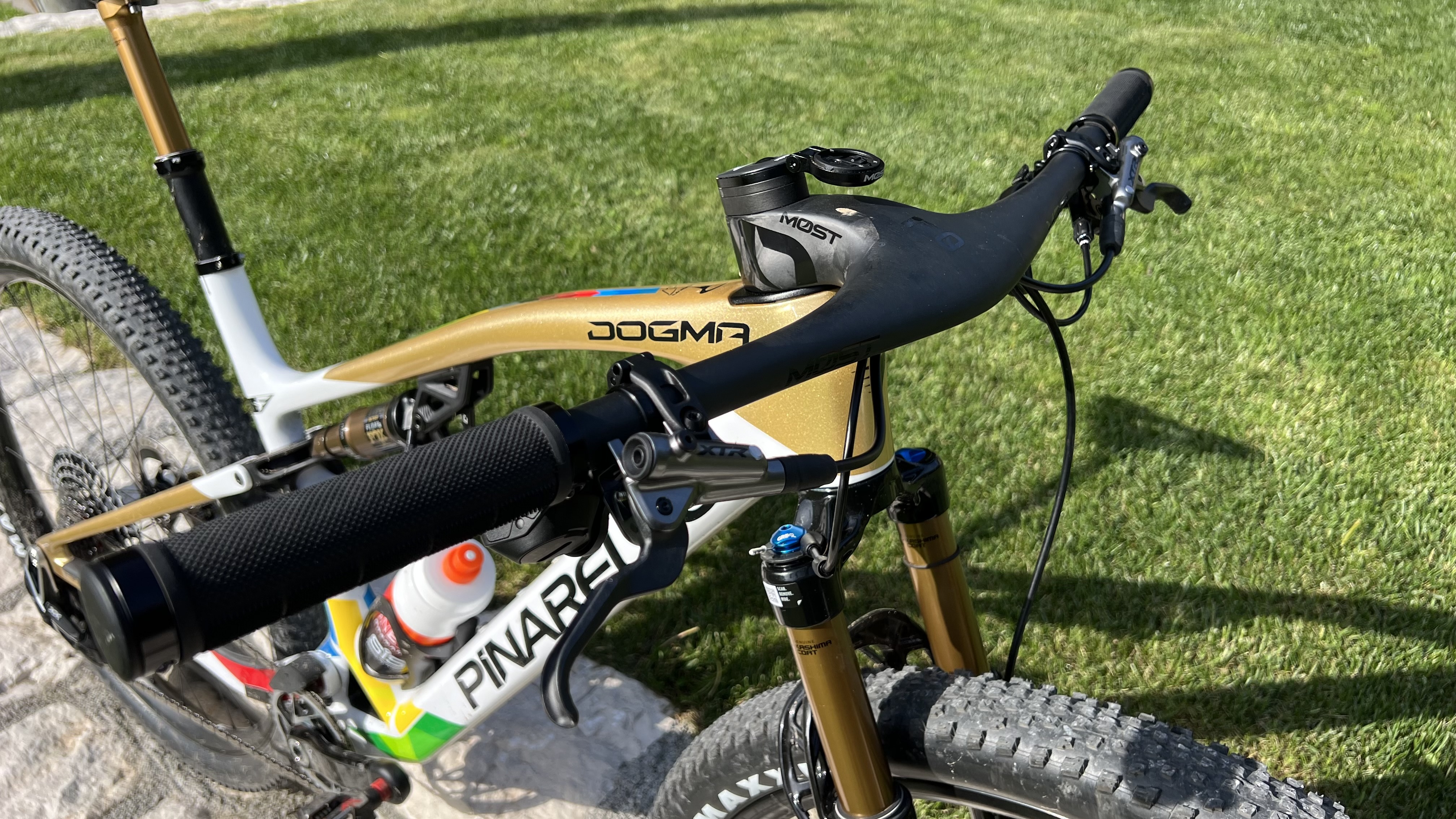
Ride, handling and performance
I only had two rides on the bike at the launch, but it’s striking enough to draw some strong conclusions. Tom and Pauline’s maximum power transfer demands have clearly been delivered. The Dogma XC felt extremely stiff as I climbed up the roads and gravel grades above Lake Garda and it feels rock solid in terms of getting watts to the ground even when stood up and giving it full throttle. The radical, hands-down level with the top tube and far out in front ride position, matched with a 75.5-degree seat angle keeps the front wheel planted rather than pulling up on steeper climbs. While the 68-degree head angle is theoretically a fast responder, the long stem means it doesn’t wander about like a slacker bike with a shorter stem. The steep head and tight back keep the wheelbase short for hooking round switchbacks or other low speed maneuvers easy too.
The suspension also works very well on climbs, Even in open mode the increased stiction of the shock relieve to the lower than average pressures means it feels tight and efficient. The 100 percent anti-squat means any movement there is doesn’t disturb pedaling rhythm by pulling back or squatting down with each power stroke. Once a rock or root has bumped the shock into action, the mid-stroke is supple and lively thanks to the natural rebound spring of the flex stay design which gives decent traction over rough ground. The highly progressive shock rate means you never get far into the already short 90mm of travel either, which further reduces the danger of disturbing your climbing mission.
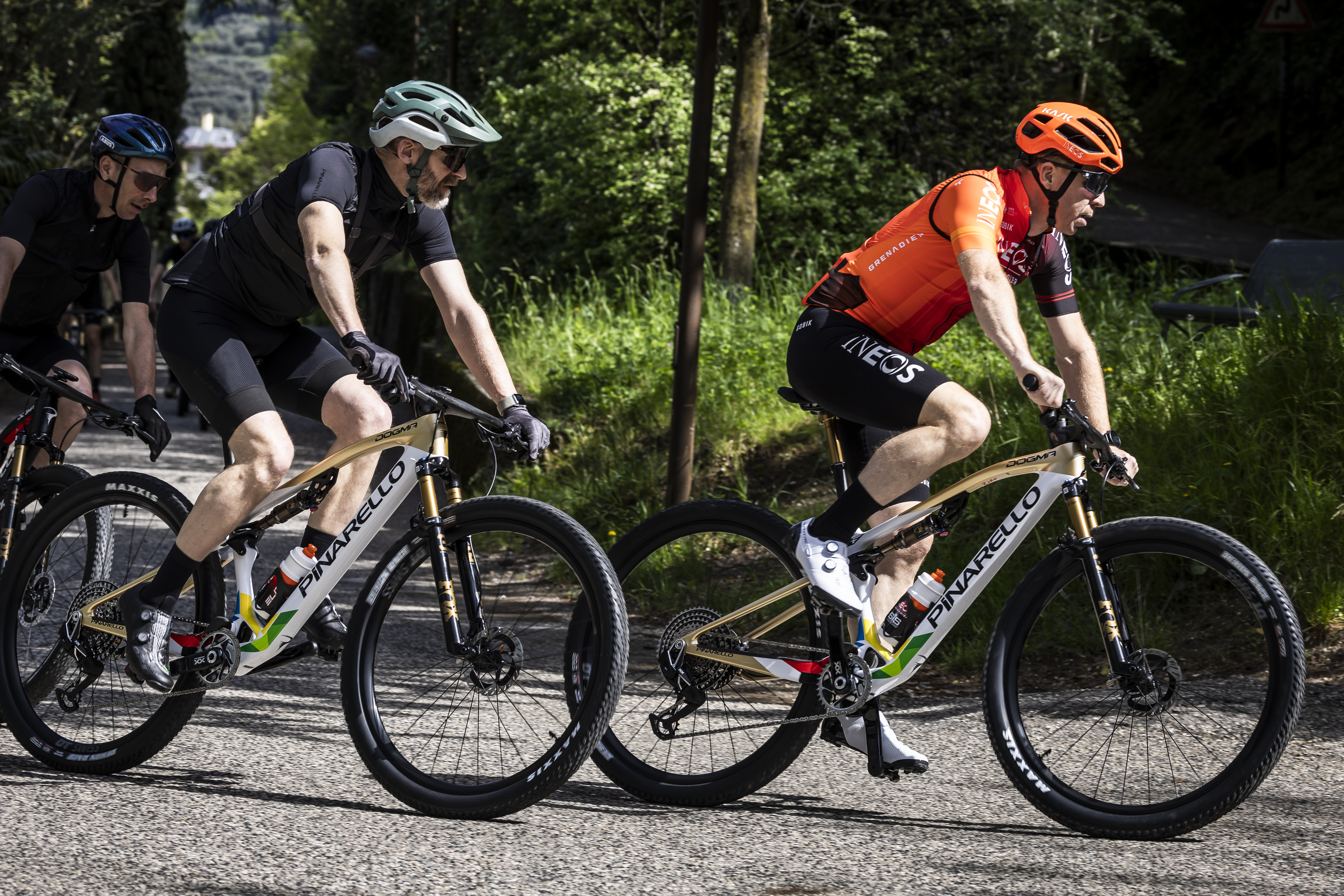
You’ll need to make the most of the gains on the climbs though as descents and technical sections gave me a whole new respect for how hard and fast Prevot, and particularly, Pidcock ride the rad stuff. In keeping with the injury reduction / mimicked ride position brief, the Dogma ride position feels more like a wide flat bar gravel bike than any other XC mountain bikes I’ve ridden recently. The long stem makes subtle slip to grip steering adjustments near impossible and I jammed up against the tight steering lock on the entry into steeper corners a couple of times which put me on the floor once. The needlessly short dropper post (the 125mm version is the same weight) keeps your hips high and restricts body movement too.
Even when I slammed the rear wheel into rocks or landings hard enough to sound like I’d smashed the rim, I couldn’t get more than seventy percent of the shock travel. I even tried dropping to thirty percent sag (120psi for me 155lb / 70kg body weight), but that didn’t push the travel marker noticeably further. Even 85-90kg riders on the launch weren’t getting full travel either and with no volume spacers in the shock, there’s no easy way to reduce that progression.
The press had the chance to ask Tom questions on a Teams call after riding and perhaps inevitably that included asking why he liked such a progressive and relatively short suspension setup. To which he responded, “I used to ride the downhills in Morzine on my hardtail during family holidays so I don’t see why you need 120mm of suspension or big tires”. Kurt the coach also suggested that the reason that none of us had got full travel was because we hadn’t set up the suspension properly. Given the combined testing experience of the media there compared to his (he rarely rides an MTB) and how low we’d gone with pressure and sag that’s quite a statement. It also ignores the fact that Pidcock and Prevot use bespoke Suntour suspension while we were on Fox dampers. It’s also worth noting that the base kinematic of the Dogma also puts the shock outside its recommended operating range in terms of leverage and pressures. Especially for the lighter riders who are likely to buy such a focused race bike.
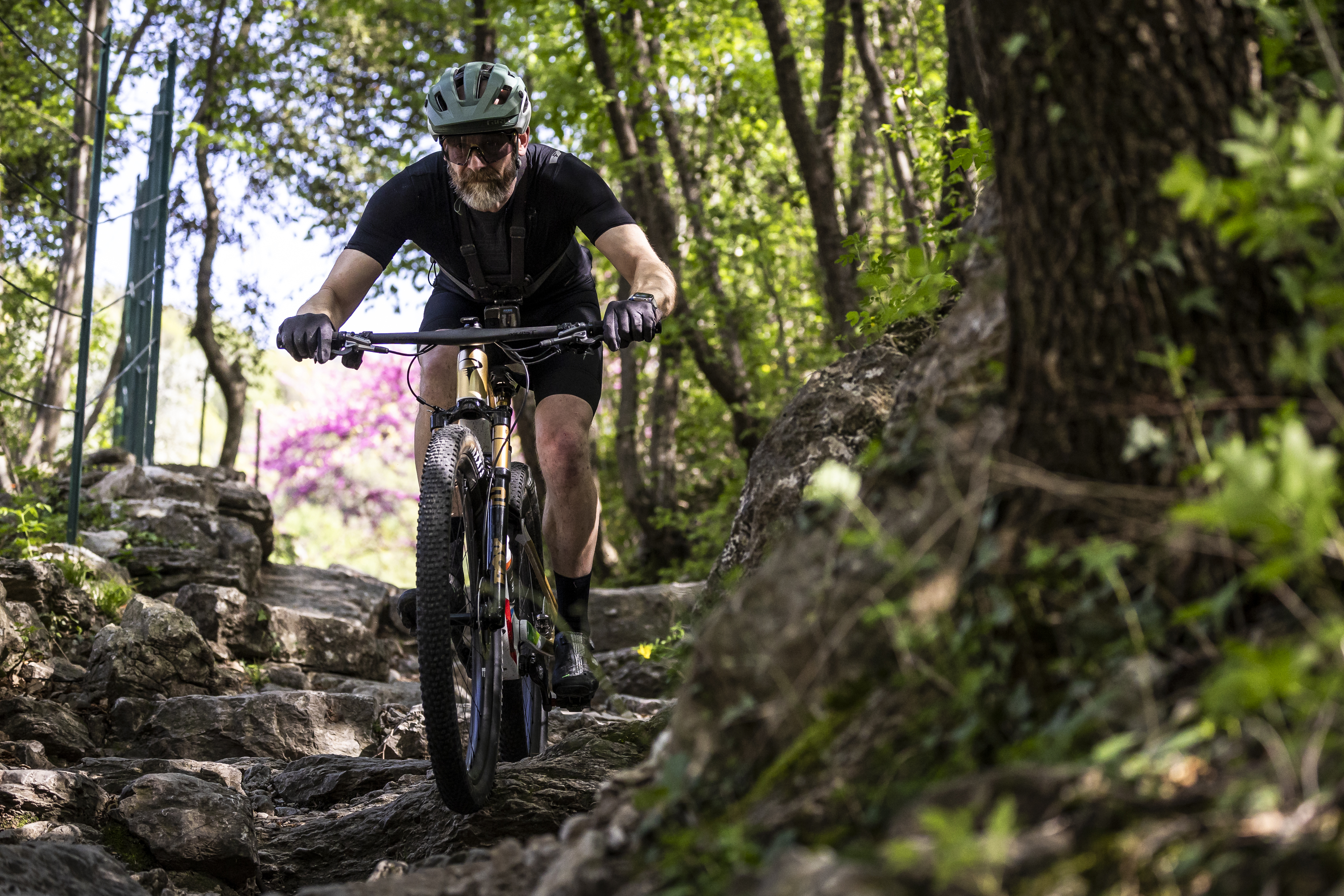
Verdict
From one perspective, what I – or anyone else apart from Tom and Pauline – think about the bike is irrelevant. Pinarello has built its racers the bike they wanted and they’ve already won a World Championship and several World Cups on it. That’s a dramatic contrast to the Cervelo ZFS which was introduced at the same time but hasn’t even podiumed – despite being a bike I’d definitely prefer to race/ride myself. The Pinarello is also a brilliant climbing bike, blisteringly quick on simpler, rolling trails and, ride position aside, comfortable enough for marathon use too.
So I could give the Dogma XC a one hundred percent score in terms of having delivered brilliantly on the design brief.
However, compared to the latest progressive XC race bikes – which are basically superlight trail bikes – the Dogma XC geometry and riding position are likely to be a real handicap rather than a help to most pilots on technical sections or descents. The base kinematic and Fox shock are also fundamentally flawed when it comes to making the most of the already limited travel. That creates a try and survive, rather than thrive vibe whenever the trail gets vaguely tricky. That’s a big contrast to bikes like the Scott Spark, Specialized Epic 8, Yeti ASR and Cannondale Scalpel, where you can really enjoy and exploit more challenging sections on the race track or off. If you don’t need the dramatic stiffness, the frame is on the heavy side for its travel too. Aspects like the lack of less extreme cockpit options, crowded lockout / dropper controls and the unnecessarily short dropper stroke are also irritating.
So in that respect the Dogma XC is probably a fifty percent score.
As I said at the start, that number won’t matter to Tom, Pauline, Kurt or Pinarello though. It won’t matter to the riders attracted to the bike on the basis of Ineos team glory association and the Pinarello name either. In the same way huge numbers of people buy Pinarello road bikes regardless of their actual suitability for their skills and physiology. But on the basis of the success of Team Sky, Team Ineos Grenadiers and a brand history that includes 30 'Grand Tour' wins – almost three times more than any other current brand. And with Tom and Pauline aboard the Dogma XC may very well add more Olympic gold medals and World Championship stripes to that unmatched trophy haul this summer.
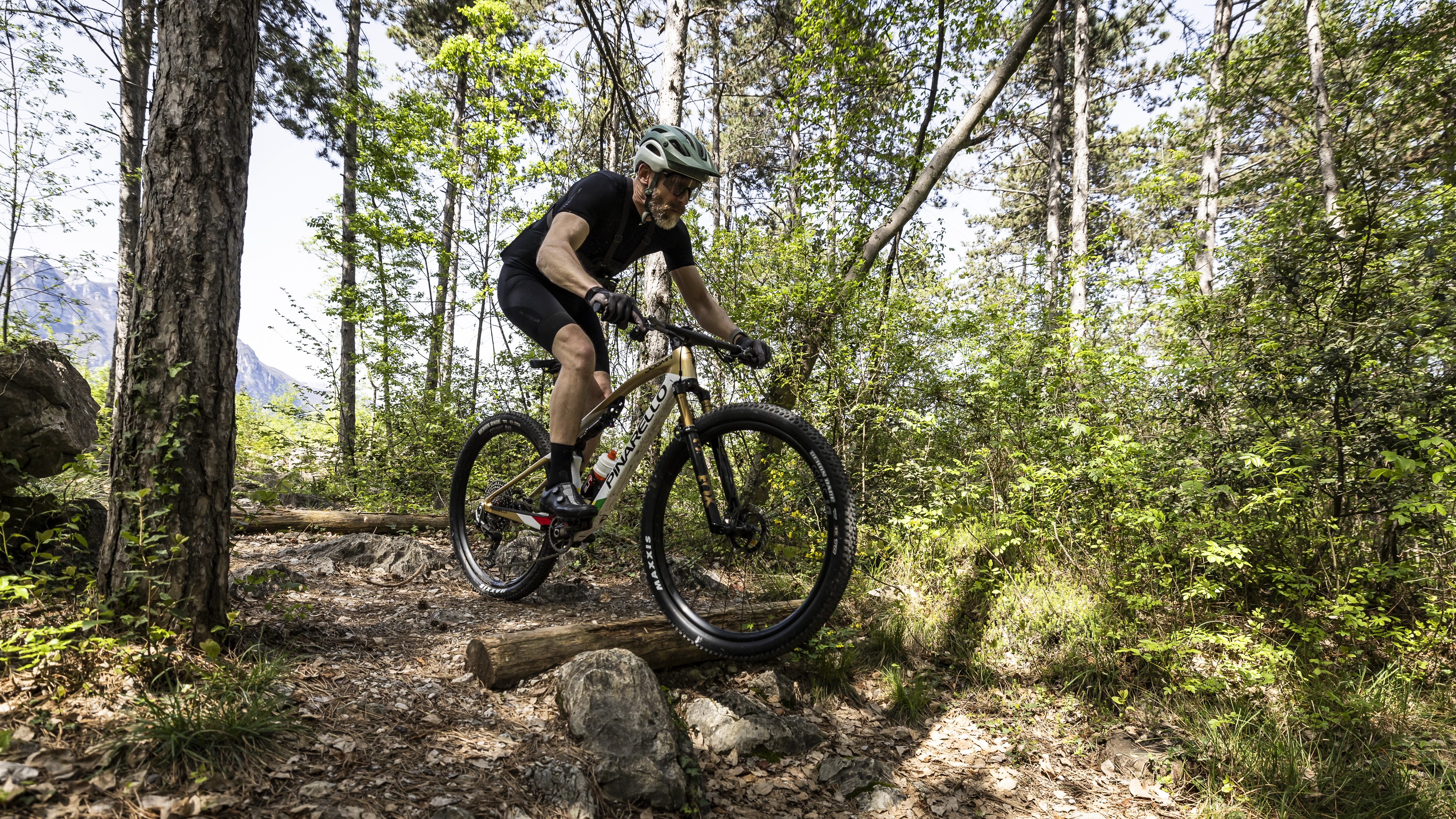
Test conditions
- Surface: Road to gravel, loose rubble and rocky slabs and natural steps.
- Trails: Road gravel, natural and built XC with borderline enduro level rock sections
- Weather: Dry and sunny
Tech specs: Pinarello Dogma XC
- Discipline: XCO and marathon racing
- Price: $13,000 / £12,000 / €13,500
- Head angle: 68 degrees
- Frame material: Toray M40J carbon fibre
- Fork: Fox 32SC Factory GRIP SL 100mm travel
- Shock: Fox Float Factory SL 90mm travel
- Size: S, M, L (tested), XL
- Weight: 10.47kg (size L without pedals)
- Wheel size: 29in
- Chainset: SRAM XX SL chainset with DUB bottom bracket.
- Rear mech: SRAM Eagle AXS XX SL, T-Type
- Shifter: SRAM Eagle AXS XX SL
- Cassette: SRAM Eagle XX SL CS-1299 12-speed 10-52T
- Brakes: Shimano XTR, 2-piston hydraulic disc brakes with 180/160mm rotors
- Tires: Maxxis Rekon Race EXO 29x2.35in front and Maxxis Rekon Race EXO 29x2.25in rear tires
- Wheels: DT Swiss XRC 1200
- Bars: Pinarello Most Talon XC 760 x 80mm one piece carbon cockpit
- Grips: Pinarello
- Seat post: Fox Transfer SL Factory 100mm 2 position dropper
- Saddle: Prologo Carbon







